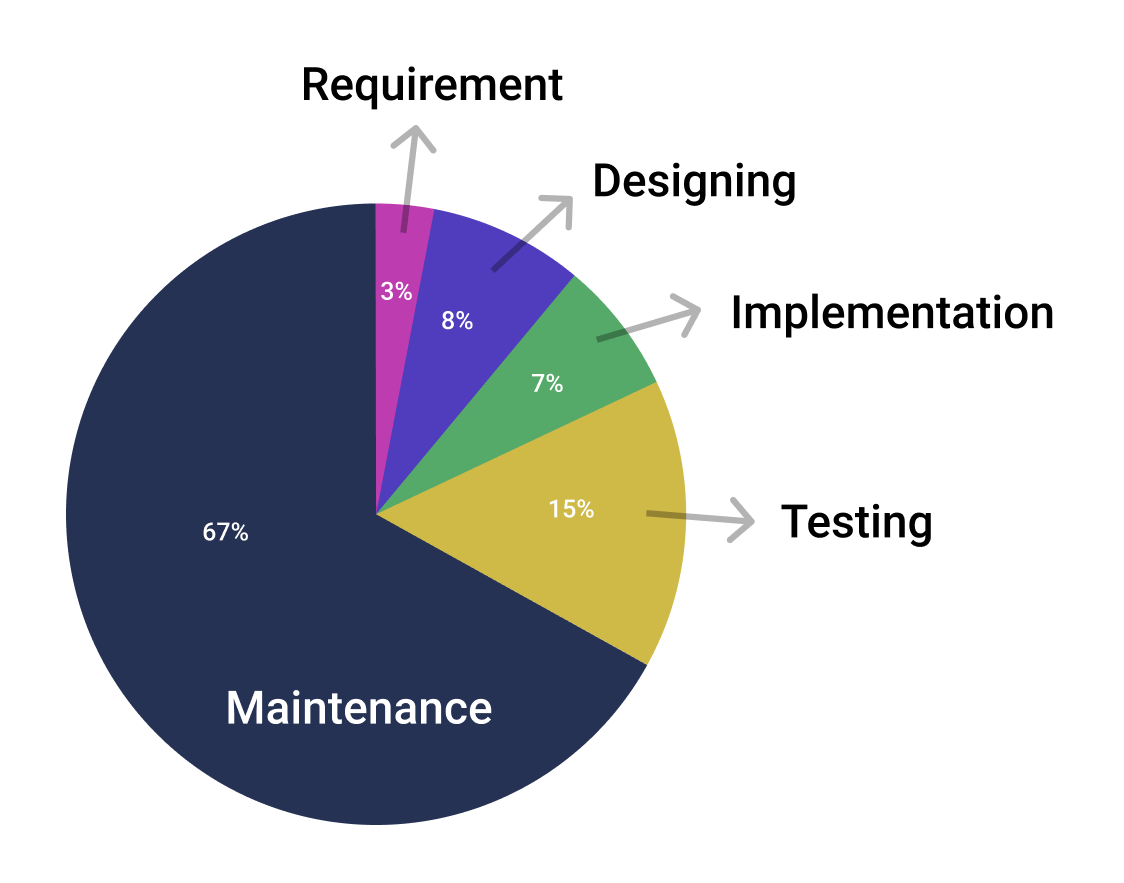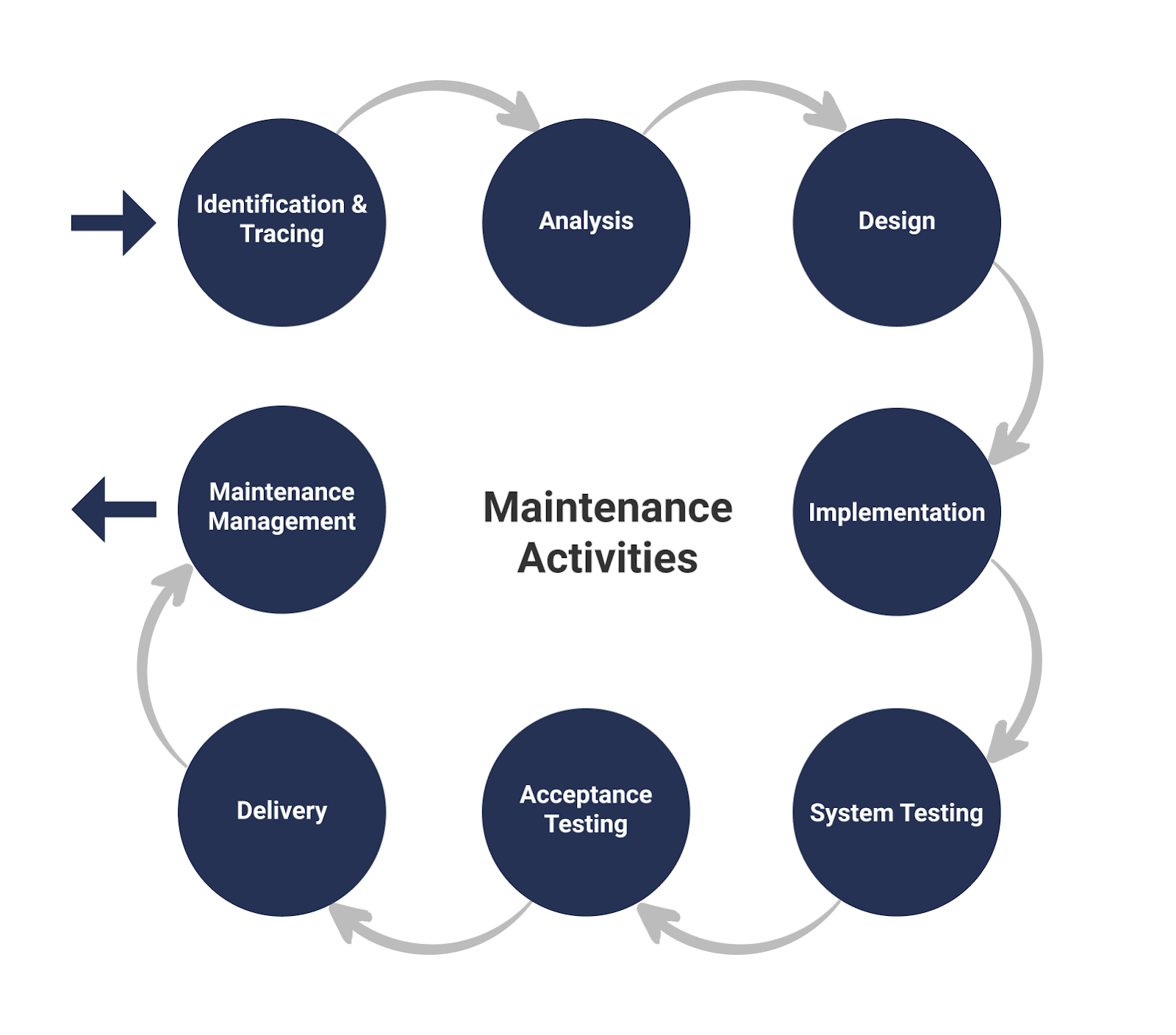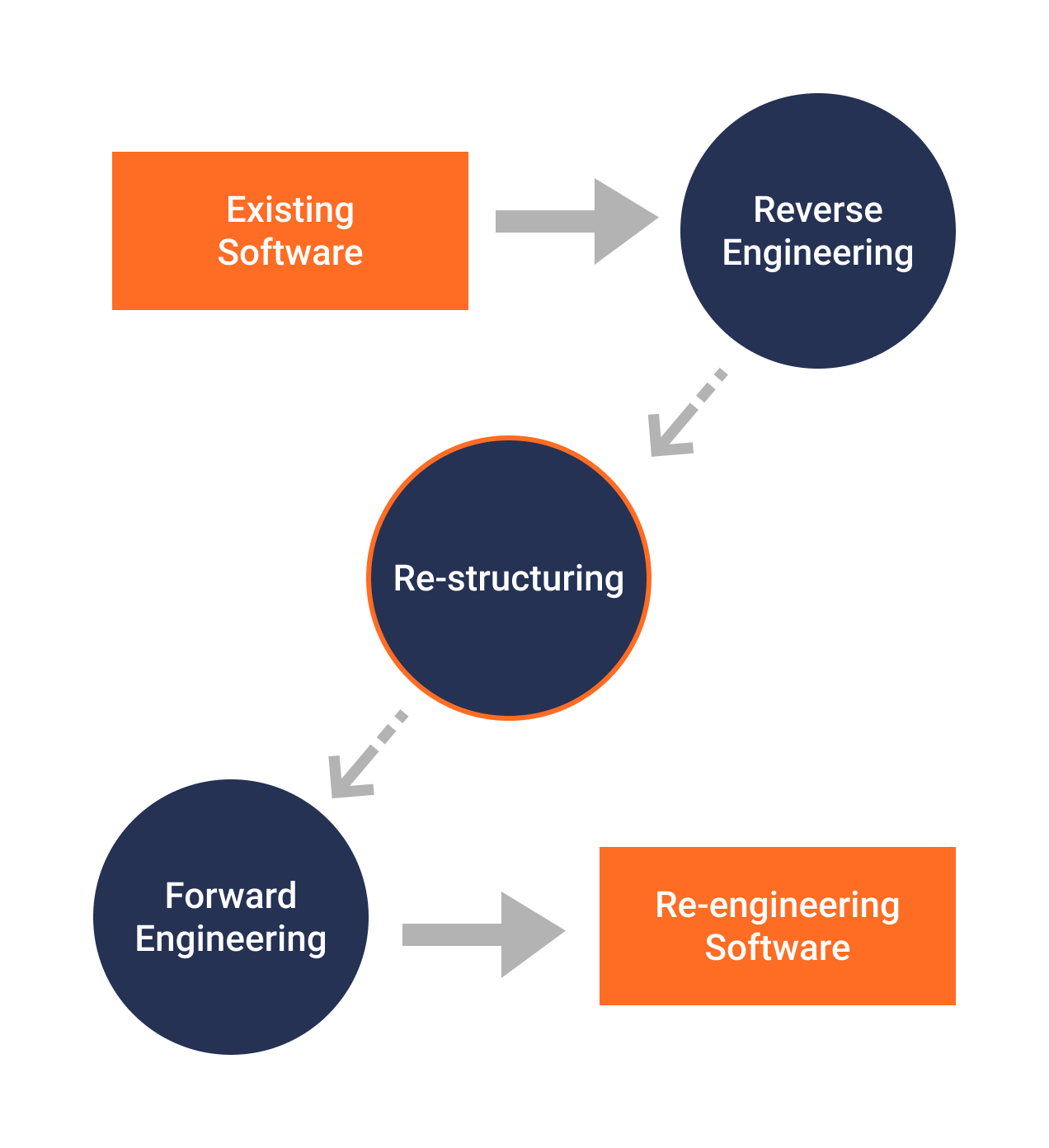SDLC Maintenance Phase is the last stage of the Software Development Life Cycle. After the software passes through the development stage and is implemented, the SDLC maintenance phase begins. Understanding its characteristics allows the individuals to analyze the software performance after deployment to resolve the issues correctly. It stands for all the updates and modifications done after the software product delivery.
What is Software Maintenance?
Software Maintenance is modifying a software product after delivery to correct all the faults and improve performance or other attributes. It is a part of the Software Development Life Cycle. Software is a model of the real world, so when the real world changes, the software requires changes, too, wherever possible.
Software maintenance includes optimization, deletion of discarded features, error correction, and enhancement of existing features. As these changes are essential, a mechanism must be created to estimate, control, and make modifications. Software maintenance must prepare an accurate plan during the development cycle. Maintenance takes up about 40-80% of the project cost, closer to the higher pole. So, a focus on maintenance lowers your costs.
Importance of SDLC Maintenance
There are various reasons why modifications are necessary. Some of them are as follows:
- External Market Conditions: Policies that change over time, like taxation and newly introduced constraints such as maintaining bookkeeping, may trigger the need for modification.
- Client Requirements: With time, customers may ask for new functions or features in the software.
- Host Modifications: If any of the hardware or platform of the target host changes, software changes are required to keep adaptability.
- Internal organization Changes: If there are any business level changes at the client’s end, like the organization venturing into a new business, acquiring another company, etc., then the need to modify the original software may arise.
- Correction of bugs: The correction of errors or ‘bugs’ is the most critical part of the service. The software must work without problems, and it’s a priority. This process includes searching for errors in the code and their correction. Problems may occur in hardware, operating systems, or any piece of software, and it should be done without any prejudice to the remaining functions of the existing software.
- Improving opportunities for a changing environment: It’s essential to improve the current functions and make the system compatible with changing the environment. It extends program capabilities, work patterns, compilers, hardware upgrades, and other aspects that affect the system workflow. Increase the system performance using a technically updated solution and regularly using software maintenance services.
- Removing outdated functions: The unwanted functionalities are useless, and by occupying space in the solution, they hurt the solution efficiency. So, the software maintenance guide helps remove such UI and coding elements and replaces it with new development using the latest technologies and tools. Thus, elimination makes the system adaptive to cope with the changing circumstances.
- Performance improvement: To improve the system performance, the developers detect the issues through testing and resolve them. Data and coding, along with reengineering, are a part of software maintenance and prevent the solution from vulnerabilities. It’s not any functionality that performs in operations, but it develops to stop harmful activities like hacking. Plus, the platform keeps on upgrading and some libraries get depreciated or get updated, resulting in maintenance.
Read about: What is SDLC (Software Development Life Cycle)?
Types of SDLC Maintenance
In a software lifetime, the type of maintenance varies based on its nature. It could be a routine maintenance task like a bug discovered by some user or a large event in itself based on the maintenance size or nature. Few types of maintenance based on the characteristics are as follows:
- Corrective Maintenance: It includes modifications and updates for correcting or fixing problems discovered by the user or concluded by user error reports.
- Adaptive Maintenance: It includes modifications and updates applied in keeping the software product up to date and tuned to the ever-changing world of business environment and technology.
- Perfective Maintenance: It includes modifications and updates done to keep the software usable over a long period. Plus, the perfective maintenance includes new features, user requirements to refine the software and improve its performance and reliability.
- Preventive Maintenance: It includes updations and modifications to prevent software’s future problems. The maintenance aims to attend to insignificant issues at the moment but may cause serious problems ahead.
Cost of SDLC Maintenance
Reports suggest that the maintenance cost is high. A study that estimated software maintenance found that the maintenance cost is as high as 67% of the entire software process cycle.
On an average, the software maintenance cost is more than 50% of all the SDLC phases. There are various factors that trigger maintenance cost to go high, like:

Real-World Factors Affecting Maintenance Cost
- The standard age of software is considered to be 10 to 15 years.
- Older softwares meant to work on slow machines with less storage capacity and memory cannot keep themselves challenged against the newly enhanced softwares on modern hardware.
- As technology advances, it’s very costly to maintain old software, especially if it is heavy on data.
- Most of the maintenance engineers are newbies and use trial and error methods to rectify problems.
- The changes made easily hurt the original software structure and make it hard for any subsequent changes.
- Changes are often left undocumented and may cause more conflicts in the future.
Software-end Factors Affecting Maintenance Cost
- Software program structure
- Programming language
- Dependence on the external environment
- Staff availability and reliability
Read about: SDLC Deployment Phase – A step-by-step Guide
SDLC Maintenance Activities
IEEE gives you a framework for sequential maintenance process activities. You can use it iteratively and extend it so that you can include customized items and processes.
The following activities go hand-in-hand with each of the following phases:

- Identification & Tracing: The stage includes activities related to the identification of modification or maintenance requirements. It is generated by the user, or the system itself reports via logs or error messages. Here, you can classify its maintenance type too.
- Analysis: The modifications are analyzed for the impact on the system, including security and safety implications. If the probable impact is severe, then you have to look after the alternative solution. A set of required modifications are materialized into requirement specifications later. The cost of modification or maintenance is analyzed, and the estimation is concluded.
- Design: New modules that you need to replace or modify are designed against the requirement specifications set in the previous stage. Test cases are created for verification and validation.
- Implementation: The new modules are coded using a structured design created during the design step. Each programmer is expected to perform unit testing in parallel.
- System Testing: The integration testing is done among the newly created modules. It’s carried out between new modules and the system. Finally, you test the system as a whole, following regressive testing procedures.
- Acceptance Testing: After you test the system internally, it is tested for acceptance through users. If, at this stage, the user complains about some issues, then they are addressed or noted to address in the next iteration.
- Delivery: After acceptance testing, the system is deployed all over the organization, either through a small update package or fresh system installation. The final testing is carried out at the client’s end after delivering the software. The training facility is given if necessary, in addition to the hard copy of the user manual.
- Maintenance Management: Configuration management is an integral part of system maintenance. It is aided with version control tools and controls versions, semi-version, or patch management.
Read about: SDLC Development Phase – A Detailed Overview
Software Reengineering
Updating the software to keep it to the current market without impacting its functionality is called software reengineering. It is a thorough process where the software design is changed, and programs are re-written.
You cannot keep tuning with the latest technology available in the market. Updating the software becomes a headache once the hardware becomes obsolete. Even if the software grows old with time, its functionality does not.
For instance, Unix was developed in assembly language. When the C language came into existence, Unix was reengineered in C as the assembly language was complex.
Other than that, programmers notice that few software parts need more maintenance than others and need reengineering.

Re-Engineering Process
- Decide what to reengineer. Is it a whole software or just a part of it?
- Perform reverse engineering to obtain specifications of existing software.
- Restructure the program if necessary. For example, changing the function-oriented programs into object-oriented programs.
- Restructure the data as required.
- Apply forward engineering concepts to get reengineered software.
There are a few important terms used in software reengineering, which are as follows:
Reverse Engineering
Reverse Engineering is a process of achieving system specifications by thoroughly analyzing and understanding the existing system. It can be seen as a reverse SDLC model, trying to get a higher abstraction level by analyzing lower abstraction levels.
An existing system is a previously implemented design about which we do not know anything. Designers do reverse engineering looking at the code and try to get the design and conclude the specifications. Thus, they go reverse from code to system specification.
Program Restructuring
Program Restructuring is a process to restructure and reconstruct existing software. It focuses on rearranging the source code, either in the same programming language or from one programming language to another. The restructuring may have either source code restructuring and data-restructuring or both.
Restructuring never impacts the functionality of the software and enhances reliability and maintainability. You can change or update program components that cause errors very frequently with restructuring. Plus, restructuring helps you remove the dependability of software on obsolete hardware platforms.
Forward Engineering
Forward engineering is a process to obtain desired software from the specifications in hand brought down using reverse engineering. It assumes that some software engineering was already done in the past.
Forward engineering has one difference compared to the software engineering process – it is carried out after reverse engineering.
Conclusion
Software maintenance is not an option but necessary. For example, if you do not service your car, then it can cause many problems every year. The amount of improper car maintenance will cost you much more. So, if you ignore system maintenance, then there will be less opportunity for optimal business growth. Plus, you need a good knowledgeable team to maintain software.
Are you looking to hire offshore software developers for custom software development? We have a team of highly experienced and dedicated offshore developers for your project – Ping Us.








